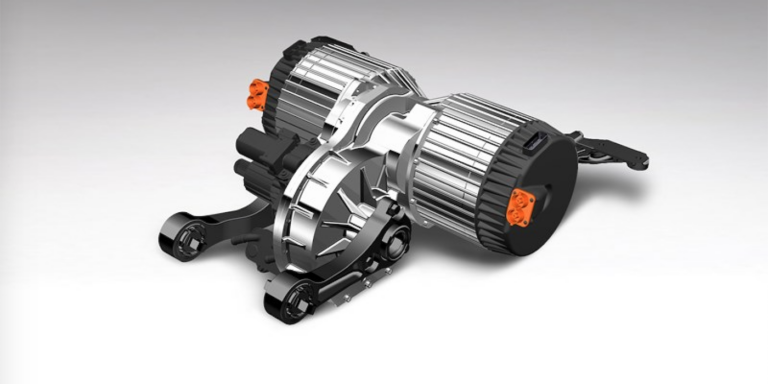Bentley has entered into a three-year research study to develop a fully integrated e-axle for EV architectures. The design aims to be free from rare-earth magnets as part of Bentley’s environmental ambitions, including introducing the first fully electric Bentley by 2026.
The study, titled OCTOPUS (Optimised Components, Test and simulatiOn, toolkits for Powertrains which integrate Ultra high-speed motor Solutions) follows an initial 18-month investigation that delivered what Bentley describes as a “technological breakthrough” in electric drive systems for high-performance vehicles. The project is in partnership with several experts (listed below).
The company says that its electric drive system exceeds the latest permanent magnet motor performance while also removing the need for both rare-earth magnets and copper windings, delivering a package both cost effective and recyclable at the end of its service life.
The OCTOPUS project will take the latest motor, power electronics and packaging transmission design, and add next-generation materials, manufacturing processes, simulation and test cycles to deliver a full e-axle powertrain with high levels of integration and performance.
Stefan Fischer, director of powertrain engineering at Bentley Motors, commented, “We have a clear roadmap to offer a hybrid option for every model by 2023, starting with the Bentayga Hybrid, and our next goal moves towards a fully electric Bentley by 2026.
“However, today there remain challenges and package constraints on the viability and flexibility of electric vehicle powertrains that are able to fully support EV architectures. With the industry, technologies and cars changing faster than ever before, research projects such as OCTOPUS are crucial to deliver innovative technologies and overcome challenges for the next generation of mobility solutions.”
OCTOPUS is an OLEV-funded project delivered in partnership with Innovate UK, which brings together the following partners with distinct roles and responsibilities:
Bentley Motors: Specification setting, vehicle integration plan and system test
Advanced Electric Machines: Motor manufacturing and systems assembly
Advanced Electric Machines Research: Motor and transmission design
The Thinking Pod Innovations & Nottingham University: Power electronics optimisation and alternative wide band gap system design
The Institute for Advanced Automotive Propulsion Systems (IAAPS) at the University of Bath: Integrated system analysis and proof of concept validation testing
HiETA Technologies: AM component design and manufacture for thermal management including stator core housing, power electronics and E-axle oil cooling
FD Sims: Next-generation wire technology development
Talga Technologies: 2D materials development for next-generation winding technologies
Diamond Light Source: The UK’s national synchrotron light source, providing access to X-ray facilities for measurements
Hartree Centre (Science and Technology Facilities Council): Advanced system testing and co-simulation toolkit development
Dr James Widmer, CEO of Advanced Electric Machines Group stated, “Having already worked closely with Bentley to successfully deliver a proof of concept, we look forward to this new project to push the performance, packaging and sustainability of electric vehicle drives to a new level, removing the need for rare-earths and copper and achieving the highest levels of system integration.”





